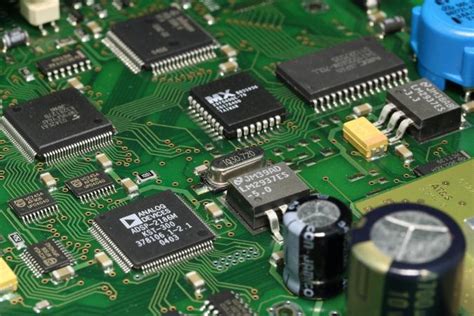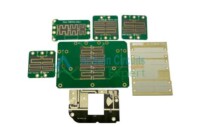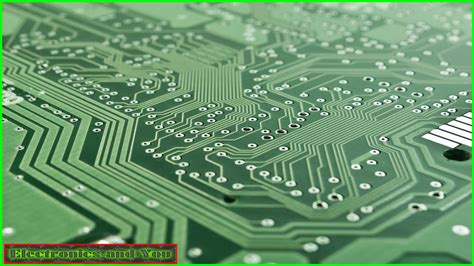Used pcb assembly equipment
Benefits Of Purchasing Used PCB Assembly Equipment
Purchasing used PCB assembly equipment offers numerous benefits that can significantly impact the efficiency and cost-effectiveness of manufacturing processes.
One of the primary advantages is the substantial cost savings.
New PCB assembly equipment can be prohibitively expensive, especially for small to medium-sized enterprises. By opting for used equipment, companies can acquire high-quality machinery at a fraction of the cost, thereby freeing up capital for other critical investments such as research and development or marketing initiatives.
In addition to cost savings, used PCB assembly equipment often comes with a shorter lead time compared to new machinery.
New equipment typically requires a lengthy procurement process, including manufacturing, shipping, and installation, which can delay production schedules. Conversely, used equipment is usually available for immediate purchase and deployment, allowing companies to ramp up their production capabilities more quickly. This expedited timeline can be particularly advantageous in industries where time-to-market is a crucial competitive factor.
Moreover, used PCB assembly equipment has the benefit of proven reliability.
New machines, while advanced, may come with unforeseen issues or require a break-in period to reach optimal performance levels. Used equipment, on the other hand, has a track record of operational history, providing buyers with a clearer understanding of its reliability and performance. This historical data can be invaluable in making informed purchasing decisions, ensuring that the equipment will meet the specific needs of the production line.
Another significant benefit is the availability of a wide range of options.
The market for used PCB assembly equipment is diverse, offering various models and brands that may no longer be in production but still deliver excellent performance. This variety allows companies to find equipment that perfectly matches their technical requirements and budget constraints. Additionally, the availability of spare parts for older models can often be more accessible and affordable, further reducing maintenance costs and downtime.
Environmental sustainability is another compelling reason to consider used PCB assembly equipment.
The electronics manufacturing industry is notorious for its environmental impact, from resource extraction to waste generation. By purchasing used equipment, companies contribute to the circular economy, extending the lifecycle of machinery and reducing the demand for new resources. This practice not only aligns with corporate social responsibility goals but also appeals to environmentally conscious consumers and stakeholders.

Furthermore, the secondary market for used PCB assembly equipment often includes value-added services such as refurbishment, calibration, and technical support.
Reputable sellers typically ensure that the equipment is in good working condition before resale, providing warranties and after-sales support to address any potential issues. These services can offer additional peace of mind, knowing that the equipment will function as expected and that assistance is available if needed.
In conclusion, the benefits of purchasing used PCB assembly equipment are multifaceted, encompassing cost savings, shorter lead times, proven reliability, a wide range of options, environmental sustainability, and value-added services. These advantages make used equipment an attractive option for companies looking to optimize their manufacturing processes without compromising on quality or performance. By carefully considering these factors, businesses can make strategic decisions that enhance their operational efficiency and contribute to long-term success.
How To Evaluate The Quality Of Used PCB Assembly Machines
When considering the acquisition of used PCB assembly equipment, it is crucial to evaluate the quality of the machines to ensure they meet your production needs and maintain operational efficiency. The first step in this evaluation process involves a thorough inspection of the machine’s physical condition. Look for any signs of wear and tear, such as rust, corrosion, or damaged components, which could indicate that the machine has not been well-maintained. Additionally, check for any missing parts or accessories that are essential for the machine’s operation.
Next, it is important to review the machine’s maintenance history.
Request detailed records from the seller, including any repairs, upgrades, or routine maintenance that has been performed. A well-documented maintenance history can provide insights into how the machine has been cared for and whether it has been subject to any significant issues in the past. Machines with a consistent maintenance schedule are more likely to be in good working condition and have a longer remaining lifespan.
Another critical aspect to consider is the machine’s age and usage hours.
Older machines or those with high usage hours may be more prone to breakdowns and require more frequent maintenance. However, age alone should not be the sole determining factor. Some older machines may still be highly reliable if they have been properly maintained and have not been subjected to excessive use. It is also beneficial to compare the machine’s specifications with current industry standards to ensure it can still meet your production requirements.
In addition to the physical and historical evaluation, it is essential to test the machine’s functionality.
If possible, arrange for a demonstration or trial run to observe the machine in operation. Pay close attention to its performance, including speed, accuracy, and consistency. Any irregularities or malfunctions during the test run could be indicative of underlying issues that may require costly repairs. Furthermore, assess the machine’s software and control systems to ensure they are up-to-date and compatible with your existing production processes.
The reputation of the manufacturer and the seller also plays a significant role in the evaluation process.
Research the manufacturer to determine their track record for producing reliable and durable equipment. Similarly, investigate the seller’s reputation by reading reviews and seeking feedback from previous customers. A reputable seller is more likely to provide accurate information about the machine’s condition and offer after-sales support if needed.
Moreover, consider the availability of spare parts and technical support for the used machine.
Machines from well-known manufacturers typically have better availability of spare parts and a wider network of service providers. This can be crucial for minimizing downtime and ensuring that any necessary repairs can be carried out promptly. Additionally, inquire about any warranties or guarantees offered by the seller, as these can provide added peace of mind and financial protection.

Finally, evaluate the cost-effectiveness of purchasing the used machine.
While the initial purchase price may be lower than that of a new machine, factor in any potential costs for repairs, upgrades, or additional maintenance. Compare these costs with the benefits of acquiring a new machine to determine which option offers the best value for your investment.
In conclusion, evaluating the quality of used PCB assembly machines requires a comprehensive approach that includes inspecting the physical condition, reviewing maintenance history, testing functionality, and considering the reputation of the manufacturer and seller. By carefully assessing these factors, you can make an informed decision that ensures the machine will meet your production needs and provide reliable performance.
Cost Savings With Second-Hand PCB Assembly Equipment
In the realm of electronics manufacturing, the cost of equipment can be a significant barrier to entry for many businesses. Printed Circuit Board (PCB) assembly equipment, in particular, represents a substantial investment. However, an increasingly popular solution to mitigate these costs is the acquisition of second-hand PCB assembly equipment. This approach not only offers considerable cost savings but also provides several other benefits that can enhance the overall efficiency and sustainability of manufacturing operations.
To begin with, the most immediate and apparent advantage of purchasing used PCB assembly equipment is the reduction in capital expenditure.
New equipment often comes with a hefty price tag, which can strain the financial resources of small to medium-sized enterprises (SMEs) and startups. By opting for second-hand machinery, companies can significantly lower their initial investment, freeing up capital for other critical areas such as research and development, marketing, or workforce expansion. This financial flexibility can be crucial for businesses looking to scale their operations or enter new markets.
Moreover, the depreciation rate of new PCB assembly equipment is steep.
Once new machinery is purchased and installed, its value begins to decline rapidly. In contrast, used equipment has already undergone this initial depreciation, meaning that its resale value remains relatively stable over time. This stability can be advantageous for businesses that may need to resell or upgrade their equipment in the future, ensuring that they can recoup a more substantial portion of their investment.
In addition to cost savings, second-hand PCB assembly equipment can also offer shorter lead times compared to new machinery.
The procurement process for new equipment often involves lengthy manufacturing and shipping periods, which can delay production schedules. Conversely, used equipment is typically available for immediate purchase and installation, allowing businesses to commence or continue their operations with minimal disruption. This expedited timeline can be particularly beneficial in industries where time-to-market is a critical factor.
Furthermore, the reliability and performance of second-hand PCB assembly equipment should not be underestimated.
Many reputable suppliers of used machinery conduct thorough inspections, refurbishments, and testing to ensure that the equipment meets industry standards and performs optimally. As a result, businesses can acquire high-quality, reliable machinery at a fraction of the cost of new equipment. Additionally, the availability of spare parts and technical support for older models is often more accessible and cost-effective, further enhancing the long-term viability of second-hand equipment.
Another significant consideration is the environmental impact of purchasing used PCB assembly equipment.
The electronics manufacturing industry is notorious for its substantial carbon footprint and resource consumption. By opting for second-hand machinery, businesses can contribute to the reduction of electronic waste and the conservation of resources. This environmentally conscious decision not only aligns with global sustainability goals but can also enhance a company’s reputation and appeal to eco-conscious consumers and partners.

In conclusion, the acquisition of second-hand PCB assembly equipment presents a compelling case for businesses seeking to optimize their financial resources, reduce lead times, and maintain high standards of reliability and performance. The cost savings associated with used machinery can provide a competitive edge, enabling companies to allocate funds more strategically and respond swiftly to market demands. Moreover, the environmental benefits of reusing equipment contribute to a more sustainable manufacturing ecosystem. As the electronics industry continues to evolve, the strategic use of second-hand PCB assembly equipment will undoubtedly play a pivotal role in driving both economic and environmental progress.
Top Brands For Reliable Used PCB Assembly Equipment
When considering the acquisition of used PCB assembly equipment, it is crucial to focus on brands that have established a reputation for reliability and performance. The market for pre-owned equipment is vast, and selecting the right brand can significantly impact the efficiency and quality of your production processes. Among the top brands that stand out in this domain, several names consistently emerge due to their proven track records and robust engineering.
One of the foremost brands in the realm of PCB assembly equipment is Siemens.
Known for their precision and durability, Siemens machines are often sought after in the secondary market. Their equipment is designed to handle high-volume production with minimal downtime, making them a preferred choice for many manufacturers. The longevity of Siemens machines ensures that even used units can provide years of reliable service, which is a testament to their engineering excellence.
Another notable brand is Panasonic, which has carved a niche for itself with its innovative technology and user-friendly interfaces.
Panasonic’s equipment is renowned for its versatility and adaptability to various production needs. Their machines often come equipped with advanced features that facilitate efficient assembly processes, even in a used condition. The brand’s commitment to quality and continuous improvement means that their older models still hold significant value and can be integrated seamlessly into existing production lines.
Yamaha is also a key player in the used PCB assembly equipment market.
Yamaha machines are celebrated for their speed and accuracy, which are critical factors in high-precision manufacturing environments. The brand’s focus on automation and ease of maintenance makes their equipment a viable option for those looking to optimize their production capabilities without incurring the high costs associated with new machinery. Yamaha’s reputation for reliability ensures that their used equipment remains a sound investment.
Fuji is another brand that commands respect in the industry.
Fuji’s PCB assembly equipment is known for its robustness and high throughput rates. The brand’s emphasis on innovation and technological advancement means that even their older models are equipped with features that enhance productivity and efficiency. Purchasing used Fuji equipment can be a strategic move for manufacturers aiming to maintain high standards of production while managing costs effectively.
Juki, a brand synonymous with precision and reliability, also deserves mention.
Juki’s equipment is designed to deliver consistent performance, which is crucial for maintaining the quality of PCB assemblies. Their machines are built to withstand rigorous use, making them a dependable choice in the used equipment market. Juki’s focus on customer support and service further enhances the value of their pre-owned machines, ensuring that users can access the necessary resources to keep their production lines running smoothly.
In addition to these brands, Mycronic and ASM Assembly Systems are also recognized for their high-quality PCB assembly equipment.
Mycronic’s machines are known for their flexibility and ability to handle complex assembly tasks, while ASM Assembly Systems offers equipment that combines precision with high-speed capabilities. Both brands have a strong presence in the used equipment market, providing options that cater to a wide range of production requirements.
In conclusion, when selecting used PCB assembly equipment, it is essential to consider brands that have a proven history of reliability and performance. Siemens, Panasonic, Yamaha, Fuji, Juki, Mycronic, and ASM Assembly Systems are among the top brands that offer dependable solutions for various manufacturing needs. By choosing equipment from these reputable manufacturers, you can ensure that your production processes remain efficient and cost-effective, even with pre-owned machinery.






